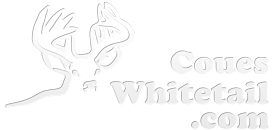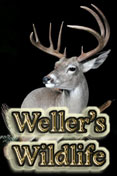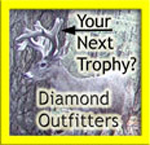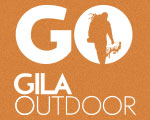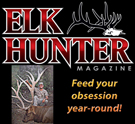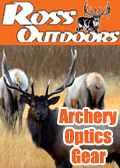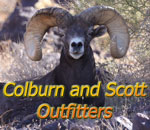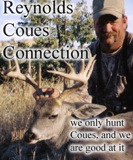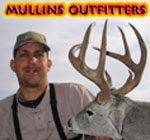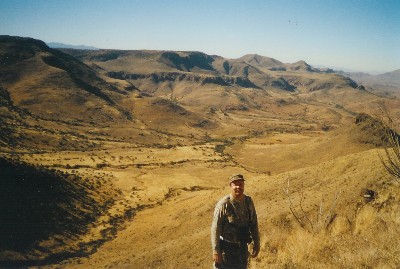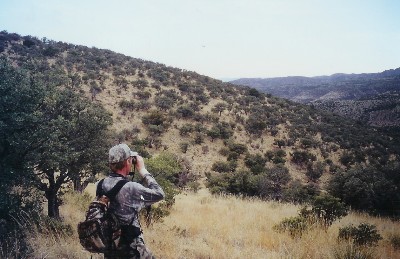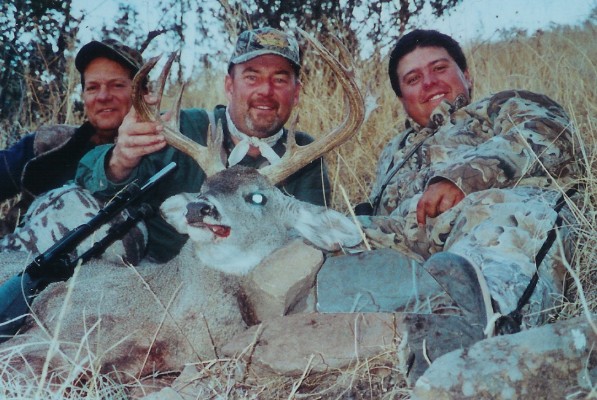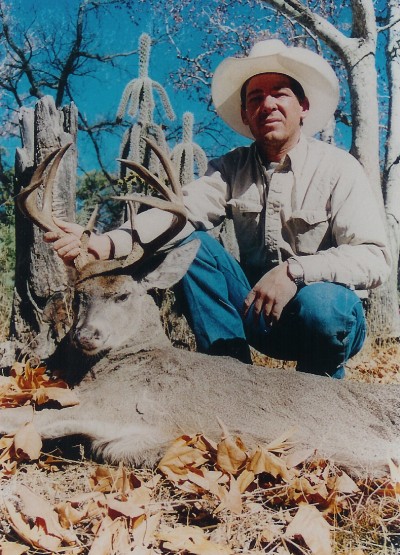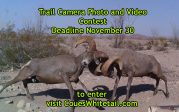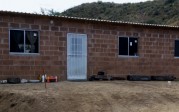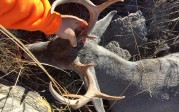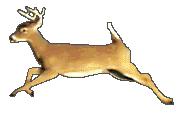Hunt Stories
Hunting the Sierra Madre with Ojo Caliente Outfitters for Dos Machos Grandes
By Tom Brown
In mid January 2002, I received a call from Rick Young of Northwest Hunter about filming a trophy Coues deer hunt in old Mexico. I’ve been hunting in Mexico for thirty years and I can usually put hunts together without too much trouble, however barter hunts are another story. I would have to work hard to make this one work for everyone involved. After making several calls I learned that my good friend Ernesto Beall of Ojo Caliente Outfitters had two of the coveted Chihuahua Coues deer tags. He jumped on the opportunity to be a part of what could be the first-ever televised trophy Coues hunt. Ernesto and I had been thinking of ways to promote his Coues deer hunting operation in Chihuahua, and a trophy Coues hunting episode of Northwest Hunter on the Outdoor Channel would undoubtedly provide the best possible forum and audience we could ever hope for. Ernesto Beall owns and leases several large ranches in northern Chihuahua which have a history of producing trophy Coues deer. The big Coues bucks are extremely wary, hard to get close to, and not much on hanging around for movie cameras; but we agreed to give it our best shot so on January 28, 2002 we set out for Ojo Caliente’s 70,0000 acre ranch in northwest Chihuahua, Mexico. This one-of-a kind ranch lies in the foothills of the famed Sierra Madres and holds one of a handful of live creeks in the region. This fresh water creek served as life support for numerous Indian villages as evidenced by the archelogical sites, petroglyphs and ruins found along its banks. The fresh water now supports a healthy population of Coues deer, mule deer, goulds turkey, javelina, mearns quail, scaled quail, black bear, mountain lion, and the elusive coatimundi, a raccoon like creature that roams the Sierra Madre in family groups up to twenty strong. The Coues deer rut takes place in January, making it the best possible month to be hunting. Unfortunately, Coues deer bucks are very aggressive prior to and during the breeding season making it difficult to harvest a buck in January without some sort of antler damage.
During our four and a half hour drive south from the west Texas town of El Paso we passed through three separate biomes before reaching the five thousand foot base camp we would call home for the next week. Our entry into Mexico was painless because we got the green light at the Palomas-Columbus international border crossing in southwestern New Mexico. For those who have not been to Mexico, all ports of entry have a gadget that looks like a stoplight. Before being allowed into the country, your friendly Mexican customs agent pushes the button for you. If it’s red you get pulled over, if it’s green you simply step on the gas and wipe those tears away. This Mexican version of roulette can be a wonderful introduction for U.S. hunters who generally arrive a little on edge about hunting in a foreign country. If you do happen to draw the red light the consequences are mild unless you pack something your outfitter or Mexican Customs told you not to. You also need to be aware that there are secondary inspection points along the way and you must be prepared to show your visa and luggage at these points as well. If you ever get a chance to hunt Mexico, I’ll promise you that these minor inconveniences are far outweighed by the tremendous hunting opportunities offered by our friends south of the border.
On arrival in Casas Grandes we found Ernesto Beall and his top guide Jose Luis ready for the task and anxious to go hunting “Hollywood style.” Since this was their first ever Coues hunt, Rick and Jim received a crash course in judging trophy Coues by looking over the thirty some-odd shoulder and full body mounts that adorn the walls and halls of our homes. This would later backfire on us when Rick ended up setting his trophy requirements based on the biggest bucks taken by our group over the past twenty years. Rick and Jim had a hard time accepting that a 110 inch Coues buck is the equivalent of a 180 inch northern whitetail, but when I showed them a photo of the 145 inch world record typical Coues they quickly came to their senses. After a delicious meal at the best steak house in Casas Grandes, we headed out to the ranch where we were pleasantly surprised by what appeared to be the beginnings of a once-in-a-blue-moon Chihuahuan snowstorm. An hour later we arrived in camp where three inches of fresh snow had already fallen. The cook and helpers were gathered around the campfire waiting for their charges, solving the world’s problems and enjoying the unusual weather. Although very little was said, all of us were concerned about the storm and the prospect of hauling heavy camera equipment up snow-covered and semi-treacherous mountains where the Coues deer make their home. Rick believes in, and relies heavily on, expensive and heavy camera equipment and his high quality hunting shows are proof of his convictions. I was sure that the camera weighed forty pounds by itself, and the tripod and other support gear easily weighed another hundred pounds making the equipment almost overwhelming for foot hunting. This however would not prove to be a problem with the leanest, meanest cameraman of all time. Jim Nabor is both an avid hunter and a one of a kind cameraman; capable of climbing like a goat and packing like a mule, as we would soon discover on our first morning climb up to the northwest corner of the ranch in a canyon known as the Boquia. This ranch has what I consider to be the world’s best Coues habitat consisting of scattered oaks mixed with juniper complimented by lots of deep, dark ravines. When compared to Sonora, Chihuahua has very little cactus making it much more pleasant to glass and foot hunt the mid elevations where the Coues bucks roam.
After an hour of slow, methodical climbing, we spotted two very nice bucks. One of them was a heavy, wide 95 inch eight point, and the other was a young six point. More importantly, both bucks were well within filming and shooting distance, and I was now chomping at the bit for Rick to make a kill for this all-important segment of the show. The bucks stood motionless against the background of fresh snow and gave us plenty of time to film and evaluate them. Rick passed the shot because it was early in the hunt and the largest of the two bucks had broken off a G-3 leaving him lopsided and slightly weak for a TV appearance and a spot in Rick’s trophy room. I tried in vain to convince Rick that getting this close to another trophy Coues with all of his camera equipment could be difficult and any good taxidermist could easily repair the broken antler. The kill would also be easy to film because the bucks were standing in two feet of snow in broad daylight without an easy escape route. Rick stood his ground and our entourage proceeded to the top of the ridge that separates base camp from the Boquia. From there we had a birds-eye view of 70,000 acres of drop-dead gorgeous Coues hunting territory. We glassed up several smaller bucks which Jim videoed as a warm-up for better things to come. I knew that this show was destined to be special because of the snow and because we were on a ranch where the odds were excellent to obtain good footage of trophy Coues deer.
As we traversed the ridge and glassed several draws feeding out of the Boquia, we spotted and passed several bucks that would put a smile on any trophy Coues hunter’s face. I quickly learned that hunting celebrities are very selective because they get to see so many trophy animals, and this celebrity would stop at nothing short of a 110 inch all time Boone and Crockett buck! That night we feasted on grilled rib-eyes with all the trimmings and gathered around the fire sipping a little tequila to kill the pain, take the edge off, and guarantee a good night’s rest. At one point during the conversation, I looked over and saw a grey fox that had come in to see what all the commotion was about. He stood there looking at us like we were intruders in his house. It was unanimously agreed that the fox was delivering a message of good things to come. Ernesto reported spotting a large ten-point buck that was a cross between a mule deer and a Coues deer. The buck was of average body size and spent the entire afternoon gathering up whitetail does until a monster Coues came over and ejected him from the mountain. This was the second cross we had seen this year, and all of us were anxious to get a glimpse of this obvious mistake of nature.
On Day two we headed out before daylight, and as the sun broke the eastern ridge, I spotted a group of bucks milling around a rocky bluff a half-mile across the canyon. We counted six bucks in this bachelor group and one was definitely a trophy even by Rick’s standards. Unfortunately, the approach was bad and it would have been hard on Jim to get the camera and gear across the rugged canyon and close enough for quality video. I could tell Rick was disappointed, but Jim was relieved as we loaded and headed up the ridge glassing for the elusive whitetail deer that we have come to admire and respect for their uncanny ability to melt into their surroundings. Later that afternoon as we made our way off the ridge between camp and the Boquia, we spotted several deer feeding on the fringes of the brush-covered draws. Rick scanned the bottom of the arroyo and spotted a buck that instantly put a big smile on his face. Sure enough, directly beneath us at around three hundred fifty yards, stood a real nice 6×4 along with a smaller buck and several does. I held my breath, and when Rick all of a sudden said, “He’s a shooter!” I breathed a sigh of relief and sensed we might get some video after all. I think this buck was special to Rick because he had spotted him while the rest of us were preoccupied with another smaller buck that had stood on a boulder under a tree for more than an hour. This is one characteristic that makes Coues deer so darn hard to find. So when you find one it’s a good idea to observe him as long as possible to see if he has any friends and to learn more about their habits and daily activities. We had another tag to fill for the show, and I honestly believed that a good ten-point Coues buck in hand, and on film, would be much better than any buck in the bush. The buck bedded down under a large alligator juniper giving us an opportunity to make some ground and get within reasonable filming and shooting distance. I worried about losing site of him because we had very little daylight and at least two hundred yards to get within camera range. It seems like everytime we take our eyes off of a trophy Coues he disappears into thin air. After closing the distance we found that the buck had vanished. With lots of quick and frantic glassing, we found him standing in the bottom of the arroyo, tending his does and feeding in the direction of the live creek that winds its way through the middle of the ranch. The buck’s neck was swollen, and he was undoubtedly the boss of his herd handling the smaller buck like a cutting horse and protecting his does as they fed around him. I held back while the cameraman, Rick, and Jose made their way another fifty yards down for the shot. I had the buck centered in my 10×50’s, and it wasn’t long before I heard the report of the 280 Remington and that unmistakable th-a-wack indicating a solid hit. The big buck hunched up, lunged forward, then ran down into the arroyo and disappeared from my view. A few minutes later I heard the second shot. I knew the first shot connected, and I was not worried about recovering Rick’s buck. I had only hoped that the daylight and camera angle were sufficient to get it all on film. I slid down to where the action was and reported the sound I had heard and the buck’s direction of travel. Within a minute or two I spotted the buck lying in the rocks not far from the tree where he’d bedded earlier. Before we could get gathered up to go down and see him, a subordinate buck moved in and mounted one of the does that milled around their fallen monarch. I have seen this happen with wild turkeys, but never with whitetails. All of us celebrated Rick’s kill like a bunch of kids in a candy shop as we hot-footed down to get a few photos of what Jim appropriately calls the “hero shots.” We called Ernesto on the radio and Jose put the big Coues deer over his shoulders and walked him out of the canyon and 300 yards down to the rendezvous point. The buck’s neck was very swollen and all of his points were in perfect condition, a miracle for a rutting buck of his size and stature. His heavy 6×4 rack was truly magnificent. His features were very typical for this ranch and his long and pointed nose made him look as elegant as any Coues I have ever seen from this region of Mexico. Ernesto’s other ranch produces the short and blocky facial features which are more common among the species. Ricks trophy Coues later green scored one hundred and twelve inches. Rick was elated with his trophy Coues and has plans to full body mount the buck being pulled down by a big cougar he’d killed earlier in the year.
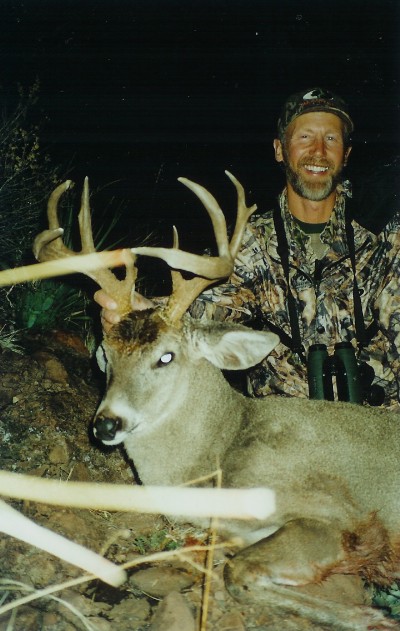
Rick Young's excellent 109 B&C (gross) buck taken on the Ojo Caliente ranch during January 2002. This was the first time Rick had hunted Coues deer.
On day three it was my turn to bat. I elected to hunt the drainage we call the Gato, where we had seen a huge heavy antlered buck two weeks before. This buck was one of the best Jose and I had seen all year, but unfortunately he had slipped right out from under us when we tried to push him through an escape route on the last day of the first hunt. As we made our way up to our glassing position, I heard some noise behind us, turned around and found myself face to face with a nice eight-point buck that had apparently heard all the commotion and come up to investigate. This was unusual because the wind was in the young buck’s favor, and we were not wearing any scent cover. He just stood there staring at us for several seconds before stomping, snorting, and walking back over the ridge. I honestly believe that this buck may have never encountered a human before and simply did not associate our scent with danger.
After several hours of glassing, I spotted three more bucks milling around some big boulders across the canyon. One was a very respectable 100 inch eight-point that Rick encouraged me to take for the show. I politely passed stating, “ I am after a better buck, and we need to keep looking.” After arriving at our next spotting promontory, we spent the rest of the morning glassing the canyons and enjoying the sunshine and left over snow. At half past twelve I looked down along the edge of the heavy brush that lines the bottom of the Gato, and there basking in the sunshine and browsing in the tall yellow grass was the same heavy antlered buck grazing with a single doe. His antlers were so heavy, wide and dark I could see them without the aid of my binoculars. When we’d spotted him two weeks before he’d been a hundred yards up the draw and in the company of a single doe. This was a buck I wanted more than anything because of his massive antlers and much like my good friend Rick Young, I had made up my mind early in the hunt that I would not accept anything less.
We put the spotting scope on him to confirm that he was the same buck we had seen two weeks before. We had a slight problem with this because this buck appeared to have a 5×4 main frame, while the other buck we had seen had a 5×5 main frame. My 30×70 spotting scope did not have sufficient magnification to count the smaller nontypical points, but Jose and I had a gut feeling that this was probably my buck minus a couple of points. We could not close the distance because there was not any cover between us and it was too far to take a shot with the 243. We watched helplessly as the deer fed on the edge of the brush, ready to disappear at the slightest hint of danger. All we could do at this point is wait for the buck to bed. After an hour of feeding and basking in the sun, they walked into the heavy brush and disappeared. A cloud of disappointment came over me as I realized it would be extremely difficult to make a stalk under the circumstances.
Once these big bucks bed in the heavy brush in the bottom of a canyon, it’s almost impossible to get a shot because they use the brush to their advantage in more ways than one. We decided to make a move and see if we could jump him out of the draw and catch him moving out against the opposite face. We eased down towards the area where they disappeared and just about the time we got to the bottom, Jose saw the doe moving through the snow on a game trail straight across the canyon. I soon caught a glimpse of the buck and his heavy wide rack. He did not stop or appear alarmed as he melted into the cover and was gone within seconds. Once again that sinking feeling came over me, and we retreated back up to the sunny side of the hill hoping to see him on the shaded north face of the Gato during our lunch break. We had seen him several times by now, but we could never be sure he would show up again. Half way through lunch Jose looked down near the bottom and said, “Aye esta Tomas!” This time the big buck and his companion were back in the bottom of the canyon feeding from the direction they had gone after the last sighting. They just stood there like mannequins in a department store window begging for us to put a stalk on them. I was glad that I had not taken a shot earlier and patted myself on the back for waiting for a better shot opportunity. The buck had stayed in the same drainage for three weeks, and we had now seen him three times in an area less than a hundred yards square. We eased to within 350 yards. I figured it was time to fish or cut bait because it was getting late, and if we dropped down further we would lose sight of him and lose the opportunity for a shot.
Finally, the moment of truth had come. I set up with my shooting sticks and let some lead out of the barrel kicking up rocks behind him, under him, over him. After several choice words I said to Jose,” I can’t make this shot. Let’s get closer.” The buck had moved ever so slightly and continued to act like a hot spring gobbler, ignoring his surroundings, and letting us stalk to within 290 yards to make what I hoped would be the final shot. I found a semi-flat spot, adjusted my shooting sticks, caught my breath, squeezed ever so slightly and Ka- boom! The giant Coues buck bolted downward and disappeared into the ravine. Jose was sure he saw one of the buck’s hind legs fly upward and thought he heard the smack of the bullet. These observations gave me some confidence in the shot, and I knew that I had connected in some way with one heck of a Coues deer.
I placed a flag at our location, marked the distance at 290 yards with my range finding binoculars and we hastily made it down to the last location of the buck and his doe. Unfortunately we did not find any blood at or near the place where the buck had last stood, but we were able to find their tracks and some flipped rocks. We scoured the bottom of the draw a hundred yards in both directions before finally picking up a faint blood trail that headed down the ravine. We decided to wait thirty minutes to avoid pushing him and hopefully give him time to expire. We followed the blood that was heavy in places but eventually dwindeled down to nothing. Our frantic search ended with a goose egg causing much distress and despair. I have lost very few big game animals and considered this loss as possibly the most tragic of my hunting career. It is hard to describe that empty and helpless feeling when you reach the end of a blood trail and know the animal has clotted and had the strength to get away. I knew I would have to live with this overnight because it was getting dark and the blood trail had all but disappeared. I started worrying about what could happen and we thought through all the scenarios both good and bad. Jose assured me that the mountain lions in Mexico typically feed on the carcass and bury the remains at the kill sight. This was not very comforting, but I figured under this scenario I would at least recover the antlers.
We carefully marked the last blood and made the two-hour hike back to the road. Once in camp I had to recall and confess the details to Ernesto and the rest of the crew and needless to say, a restless night ensued. The next morning found us back up in the draw at daybreak searching from the point where the blood trail left off. After what seemed like an eternity I said, “We have got to go higher and look for birds on the carcass.” Later that morning I watched a single crow light in a tree in an area one hundred yards up from the last blood sign. This would be our last chance at finding the lost buck. That hopeless feeling had already welled up inside of me and I was almost certain the hunt was over. I marked the tree, and we started a grid pattern search working from the bottom of the draw up to the crow’s landing spot. The big black bird had done his work. I found heavy blood on a game trail 50 yards up the side of the ravine and more and more until I stood at the last puddle and found absolutely nothing! I yelled to the guys to come over and help me but the wind had picked up and they must not have heard me. Knowing the buck had to be close, I retraced the blood trail ten yards, looked down, and there he was laid up under a yucca, stiff as a board. I will never forget that close up view and the feeling that came over me when I found this monster Coues deer I had worried so much about and worked so hard for. The buck had retraced his trail, expired, and rolled down off the game trail. The shot had passed high above the vitals angled back and exited through the hind leg breaking it cleanly in half and severing a main artery. It is hard to believe the old buck could climb straight uphill with only one functional hind leg. It’s even harder to believe that he was not slinging all sorts of blood from the point of impact down to the first blood and again as he climbed up the side of that canyon with only three functional legs. Others might have given up, but with a strong will and lots of determination we were able to solve the puzzle and recover what would ultimately be a buck of a lifetime.
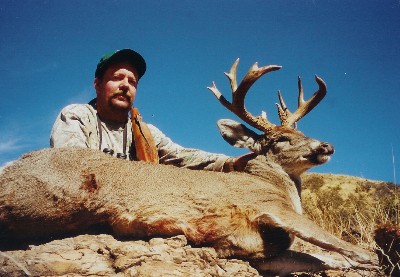
Tom Brown's 117 B&C (green, gross score) was taken on the Ojo Caliente ranch in January 2002. This buck probably would have scored 125 if it didn't have so many broken tines.
The old buck had been fighting a lot during the last two weeks and had broken off his G-4 on his right side and sheared the same point off the left side flush with the main beam. He also damaged his right brow tine providing my taxidermist with plenty of expensive antler repair work. This seven and a half year old monster Coues green scored 117 Boone and Crockett points. He would have scored 125 B & C had he not broken three of his tines. Despite his broken antlers, this buck was a one of a kind because he carried a tremendous four inches of mass all the way out his seventeen-inch main beams.
We were all extremely happy with the superior genetics of these two trophy bucks, which represent a good sampling of what this one hundred square mile Coues hunting paradise is capable of producing. This ranch undoubtedly looses more trophy deer to old age and predation than are taken by the hand full of trophy hunters outfitted by Ojo Caliente each season. My friend and master taxidermist, Chuck Meachum from Tucson, Arizona, said he could repair the broken tines and said, “You will never know the difference.” We spent the next morning caping out my buck and gawking at the size of the deer we had killed and documented for a television show. Filming spot and stalk trophy Coues hunts under fair chase conditions was a true challenge, and our hats are off to Rick Young and Jim Nabor for doing such a great job. The last couple of days were spent filming the numerous Indian ruins, petroglyphs, and plant life so that Rick would have plenty of good video to compliment the show. When all was said and done, the Northwest hunter, the Southwest hunter, and the Alabama cameraman ended their Mexico Coues hunting adventure without incident and all returned home to the states safe and sound with new friendships, great trophies and fond memories of hunting in the Sierra Madres with Ernesto Beall of Ojo Caliente Outfitters. The show will air on the Outdoor Channel as well as several others in September of 2003 and a video will be available in April 2003.
To book a trophy Coues deer or goulds turkey hunt with Ernesto Beall of Ojo Caliente Outfitters please take a look at Ernesto’s web site at www.ojocalienteoutfitters.com or give him a call at (915) 845-3149.
Story and Photos by Thomas C. Brown all rights reserved.
Other fine bucks taken by Ojo Caliente Outfitters:
Tagged mexico, ojo caliente outfitters
